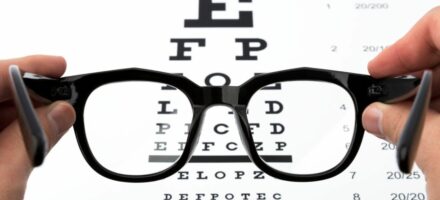
Your eyesight may have been good enough to pass your practical driving test, but have you ever wondered whether your eyesight is still good enough for you to be deemed safe driver years down the line?
Take our quiz to test whether your eyesight is still up to scratch for safe driving.
1. Can you read vehicle number plates from 20 metres away?
...20 metres for new-style number plates or 20.5 metres away for old-style number plates?
A) Yes – I can see these clearly
B) No – It's too unclear to make out properly
2. If you need to wear glasses or contact lenses to answer yes to the above question...
Do you continue to wear them whenever you are driving?
A) Yes
B) No, as I often forget or don't see the need to
3. Have you had an eye test in the last two years?
A) Yes
B) No
4. Do you have a visual problem or condition that affects your sight in both eyes?
This does not include being long-sighted or short-sighted.
A) No
B) Yes
5. Do you have a visual problem or condition that affects your sight in one eye?
This does not include being long-sighted or short-sighted.
A) No
B) Yes
6. If you have an existing visual condition such as vision is one eye only, have you informed the DVLA?
A) Yes
B) No
7. Do you suffer from any of the following visual conditions?
Severe bilateral glaucoma, severe bilateral retinopathy or any other significant visual defects?
A) No
B) Yes
8. Can you see road signs and road markings clearly without having to strain your eyes to do so?
(Although there is no set distance requirement for this, it is recommended that you can see road signs from one or two car lengths away to ensure that there is enough time and distance to follow the sign's instructions or to alert other road users of your intentions e.g. indicating to turn off).
A) Yes
B) No
9. Is your field of vision adequate for safe driving?
The DVLA classes an acceptable field of vision as being "a field of at least 120 degrees on the horizontal measured using a target equivalent to the white Goldmann III4e settings" along with the presence of "no significant defect in the binocular field which encroaches within 20 degrees of fixation above or below the horizontal meridian". Based on this medical rule, is your field of vision adequate for safe driving?
A) Yes
B) No
10. Do you have any significant defects to your peripheral vision?
(The DVLA medical rules state that it is acceptable to have a peripheral defect that is "a cluster of up to three adjoining missing points, unattached to any other area of defect, lying on or across the horizontal meridian" or "a vertical defect of only single point width but of any length, unattached to any other area of defect, which touches or cuts across the horizontal meridian". If you have a peripheral defect that is considered to be more severe than this, it is classed as unacceptable for safe driving.)
A) No
B) Yes
11. Do you have any significant defects to your central vision?
(According to the DVLA medical rules for drivers, central vision defects are considered significant if they constitute "a cluster of four or more adjoining points that are wholly or partly within the central 20-degree area"; central vision loss as the result of "a single cluster of three adjoining missing points up to and including 20 degrees from fixation", or central vision loss that is "an extension of a hemianopia or quadrantanopia of size greater than three missed points").
A) No
B) Yes
What's The Verdict?
Mostly A's: Congratulations! You meet the minimum eyesight requirements set out by the DVLA and have not developed any visual problems that could affect your ability to drive safely. There does not seem to be any obvious reason why you shouldn't be classed as a safe driver based on your eyesight.
Mostly B's: You are likely to be struggling to meet the minimum eyesight requirements or may not meet them at all. This could be because of a medical condition such as cataracts or glaucoma that is affecting your vision, or you may simply need to start wearing glasses or contact lenses to be able to pass the number plate test properly.
- If you cannot meet the number plate test, the DVLA will usually deem you to be unsafe as a driver. Book an eye test to see whether you need glasses or contact lenses as this may make a significant difference to your eyesight, but make sure that you wear these whenever you drive if you need to wear them for the number plate test.
Informing the DVLA
If you know that you have an existing medical condition that significantly affects your central and/or wide vision in one or both eyes (and is more significant than just being long-sighted or short-sighted), inform the DVLA of this and be prepared for your driving licence to be revoked on medical grounds. This includes cataracts (if this means that you struggle to read number plates from the required distance due to the glare) and severe glaucoma.
Disclaimer: The information in the article is for general purpose information only and should not be constituted as legal advice. This article has been produced by a third party and Jardine Motors does not take any responsibility for the completeness, accuracy, or reliability with respect to the website or the information provided. Article last updated March 2016.



